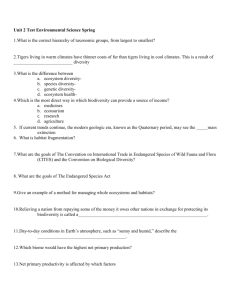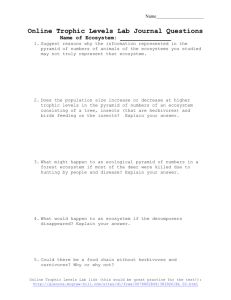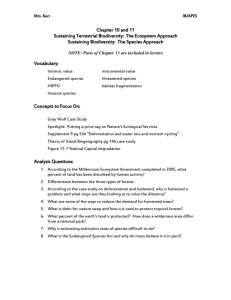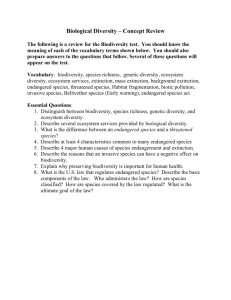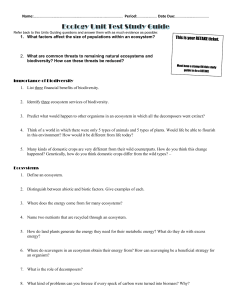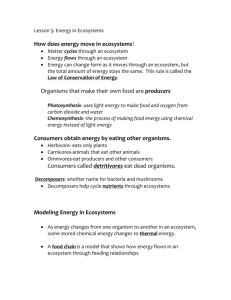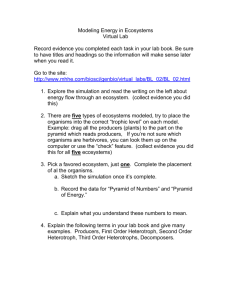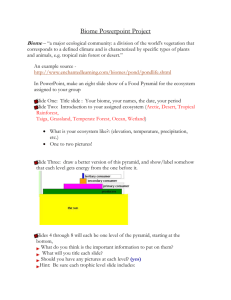Introduction/Scientific Method/Decision
advertisement
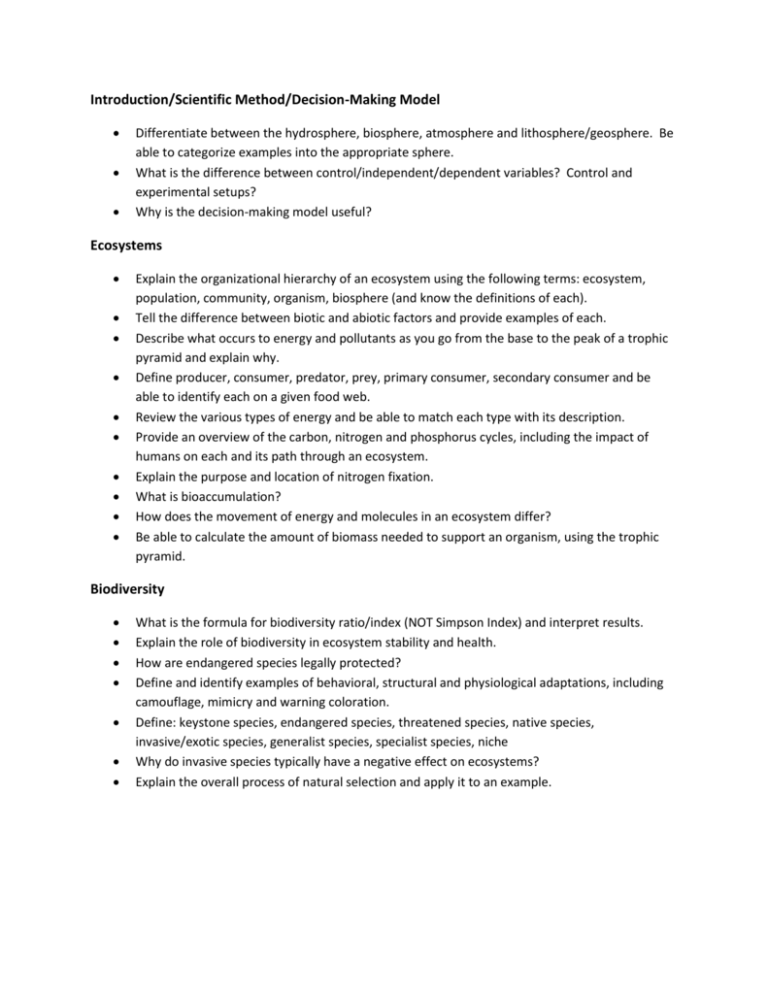
Introduction/Scientific Method/Decision-Making Model Differentiate between the hydrosphere, biosphere, atmosphere and lithosphere/geosphere. Be able to categorize examples into the appropriate sphere. What is the difference between control/independent/dependent variables? Control and experimental setups? Why is the decision-making model useful? Ecosystems Explain the organizational hierarchy of an ecosystem using the following terms: ecosystem, population, community, organism, biosphere (and know the definitions of each). Tell the difference between biotic and abiotic factors and provide examples of each. Describe what occurs to energy and pollutants as you go from the base to the peak of a trophic pyramid and explain why. Define producer, consumer, predator, prey, primary consumer, secondary consumer and be able to identify each on a given food web. Review the various types of energy and be able to match each type with its description. Provide an overview of the carbon, nitrogen and phosphorus cycles, including the impact of humans on each and its path through an ecosystem. Explain the purpose and location of nitrogen fixation. What is bioaccumulation? How does the movement of energy and molecules in an ecosystem differ? Be able to calculate the amount of biomass needed to support an organism, using the trophic pyramid. Biodiversity What is the formula for biodiversity ratio/index (NOT Simpson Index) and interpret results. Explain the role of biodiversity in ecosystem stability and health. How are endangered species legally protected? Define and identify examples of behavioral, structural and physiological adaptations, including camouflage, mimicry and warning coloration. Define: keystone species, endangered species, threatened species, native species, invasive/exotic species, generalist species, specialist species, niche Why do invasive species typically have a negative effect on ecosystems? Explain the overall process of natural selection and apply it to an example. Populations Define and identify examples of predation, mutualism, commensalism, parasitism, competition and symbiosis. Differentiate between exponential and logistic growth in terms of resource availability and carrying capacity. How is each shown in a graph? How can the populations of species be estimated? Explain several methods. What is the current size of the human population? Distinguish between density-dependent and density-independent limiting factors. What factors limit a population’s growth? What is population density? Be able to read and interpret an age pyramid. Be able to identify limiting factors based on graph information. What is the purpose of a population viability analysis? What is the difference between k and r selected populations? How are type I, II and III survivorship curves different? What event will likely follow once a species overshoots carrying capacity? Analyze a predator-prey graph.


